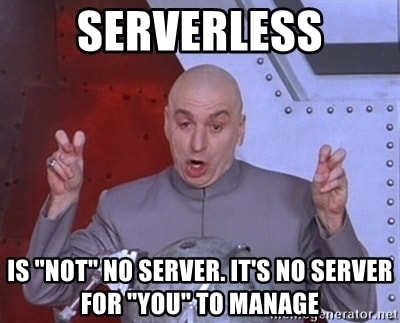Serverless architecture has been a buzzword in the world of web development for some time now, and one of its most powerful and versatile components is the serverless database. But what exactly is a serverless database, and how can it benefit web developers? In this guide, we’ll peel back the layers of mystery surrounding serverless databases and provide you with a clear understanding of what they are and how to leverage them effectively in your web development project.
Understanding the Basics
Before diving into the intricacies of serverless databases, let’s start with a fundamental question: What makes a database “serverless“?
In a traditional database setup, you’re responsible for provisioning and managing the underlying servers, ensuring scalability, and handling maintenance tasks. However, with serverless databases, all of this heavy lifting is abstracted away. You no longer need to worry about server provisioning, maintenance, or even scaling, as the cloud provider takes care of these tasks for you.
Imagine you’re building an e-commerce website. With a traditional database, you’d need to manage the servers to ensure that your website can handle a surge in traffic during a holiday sale. But with a serverless database, the cloud provider automatically scales your database to meet demand, ensuring your site stays responsive.

Key Benefits of Serverless Database
Now that you have a basic understanding of what serverless databases are, let’s explore the benefits that make them an attractive option for web developers:
Cost-Efficiency
Serverless databases follow a pay-as-you-go pricing model. You only pay for the resources you actually use, making it cost-effective, especially for smaller projects or startups. There’s no need to invest in expensive server infrastructure upfront.
For example, if you’re launching a new web app, you can start with a serverless database and incur minimal costs while your user base grows. As your app gains traction, the database automatically scales to accommodate increased traffic.
Scalability and Performance
Serverless databases are designed for seamless scalability. They can automatically handle traffic spikes and increased workloads without any intervention from you. This ensures your web application maintains its performance, regardless of how many users you have.
If your social networking site goes viral overnight, a serverless database ensures that your platform can handle the influx of new users and their data without any hiccups.
Reduced Administrative Burden
Forget about server maintenance, patching, and backups. Serverless databases are fully managed by cloud providers, allowing you to focus solely on your application’s code and functionality. This reduces the administrative overhead and frees up valuable time for development.
Instead of spending hours on database maintenance tasks, your development team can focus on enhancing user experience, adding new features, and improving the overall performance of your web app.
Global Availability
Most serverless database offerings are available in multiple regions worldwide. This means your data can be replicated across various data centers, ensuring low-latency access for users around the globe.
If you have an e-commerce site, a serverless database can replicate product catalog data to data centers in different regions. This ensures that customers from different parts of the world experience fast page loading times.
Use cases for Serverless Databases
Serverless databases are versatile and can be applied to various web development scenarios. Here are a few use cases to consider:
Content Management Systems (CMS)
Serverless databases are well-suited for storing and managing content in CMS platforms. They enable easy content updates and real-time collaboration among content creators.
User Profiles and Authentication
When building web applications that require user authentication and profiles, serverless databases can efficiently store user data, ensuring a seamless user experience.
Real-time applications
Serverless databases are great for real-time applications like chat apps and collaborative tools, where data needs to be updated and synchronized instantly across multiple clients.
Choosing the Right Serverless Database
Now that you’re convinced of the benefits of serverless databases and have a grasp of their applications, you might wonder which one to choose. Popular options include Amazon DynamoDB, Google Cloud Firestore, and Firebase Realtime Database, each with its own strengths and pricing model. Your choice will depend on your project's specific requirements.
If you are looking for a serverless database for your next project, try out Xata - a Serverless database platform powered by Postgres. Just focus on your application code and let Xato handle the rest.
In conclusion, serverless databases are a valuable addition to any web developer’s toolkit. They simplify database management, reduce costs, and offer exceptional scalability. By understanding the basics and benefits of serverless databases, you’re well-equipped to make informed decisions and harness their power to build robust and efficient web applications. So, go ahead and demystify serverless databases, and unlock their potential in your next web development project.
Thanks for the read. Have a great day!
